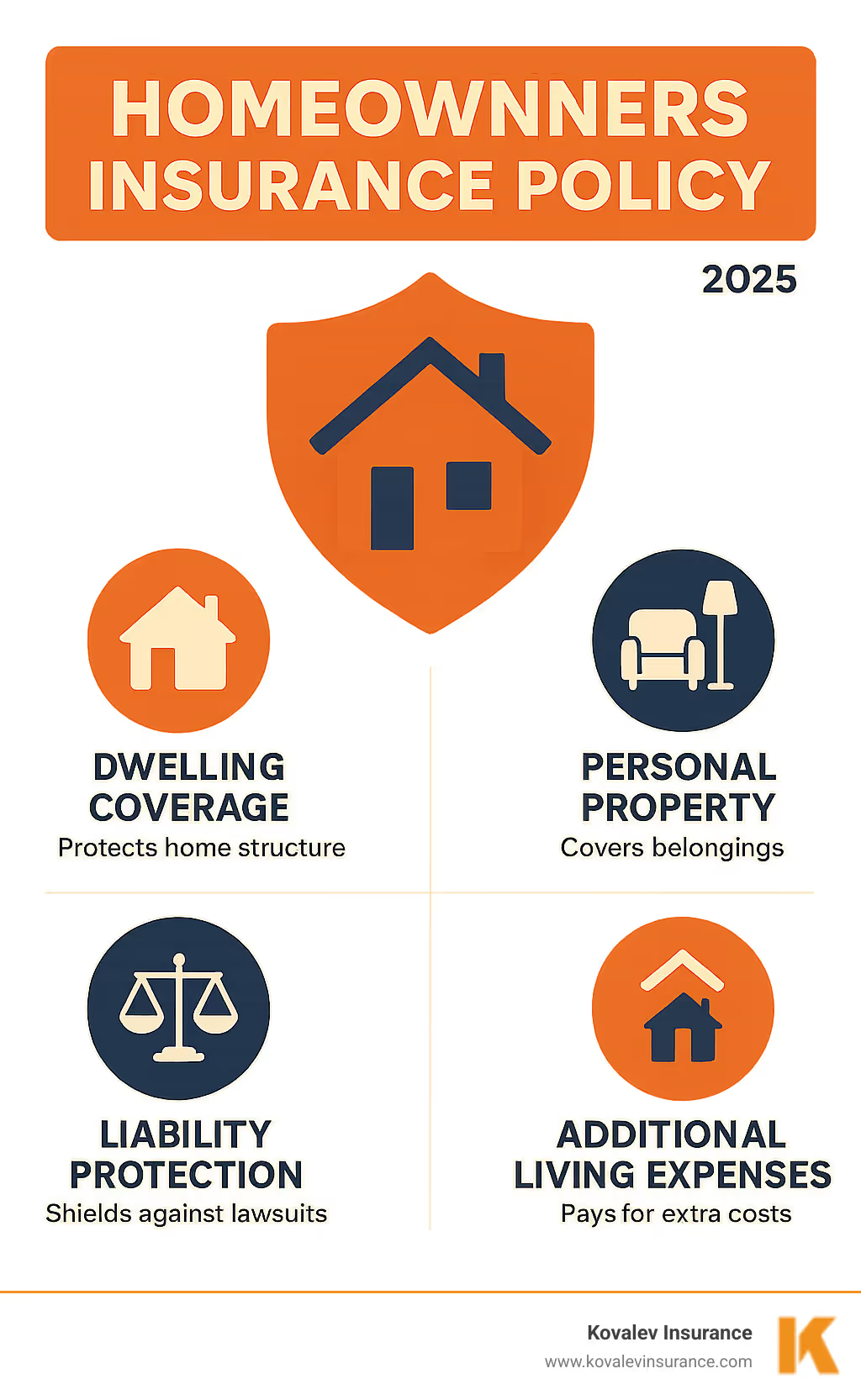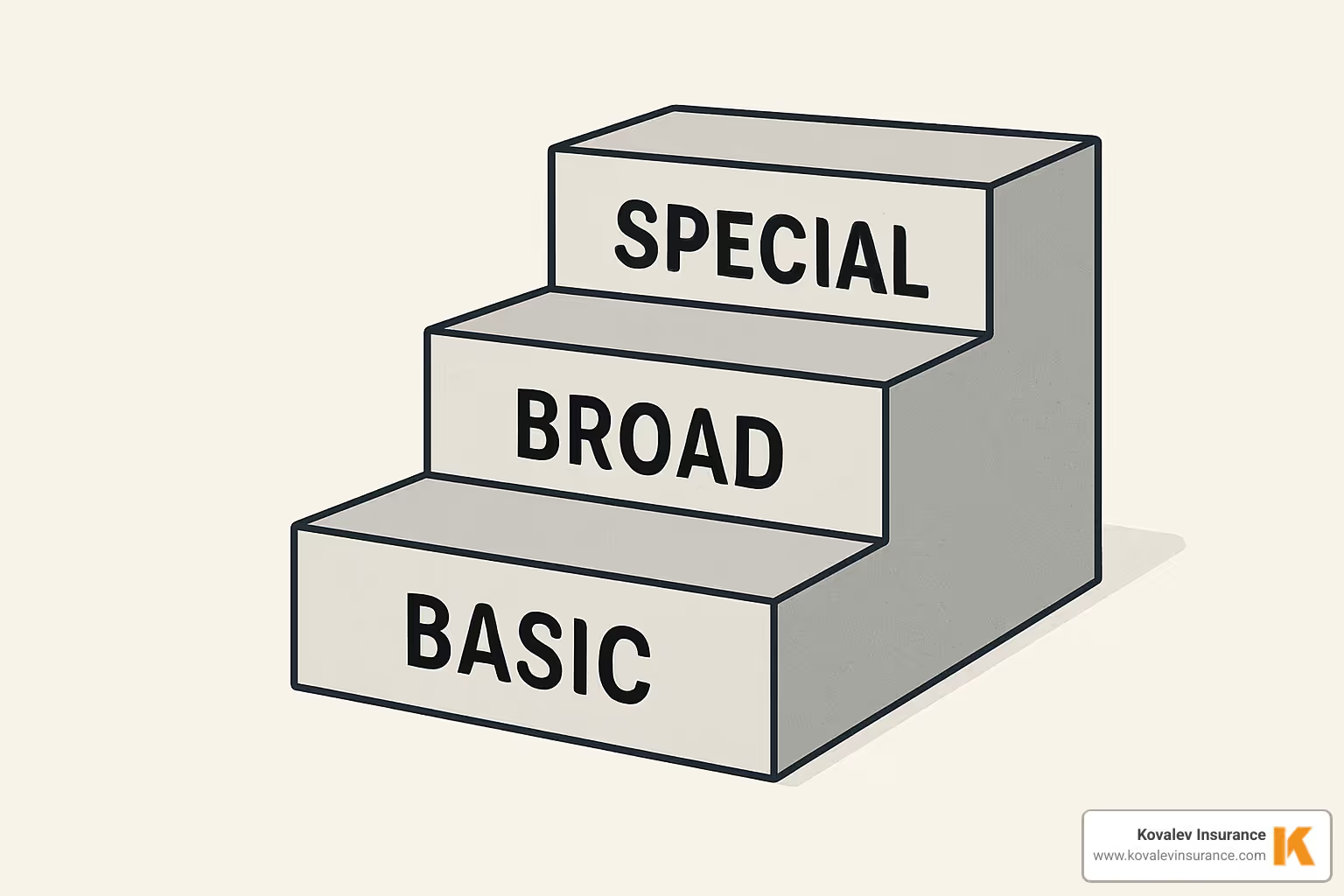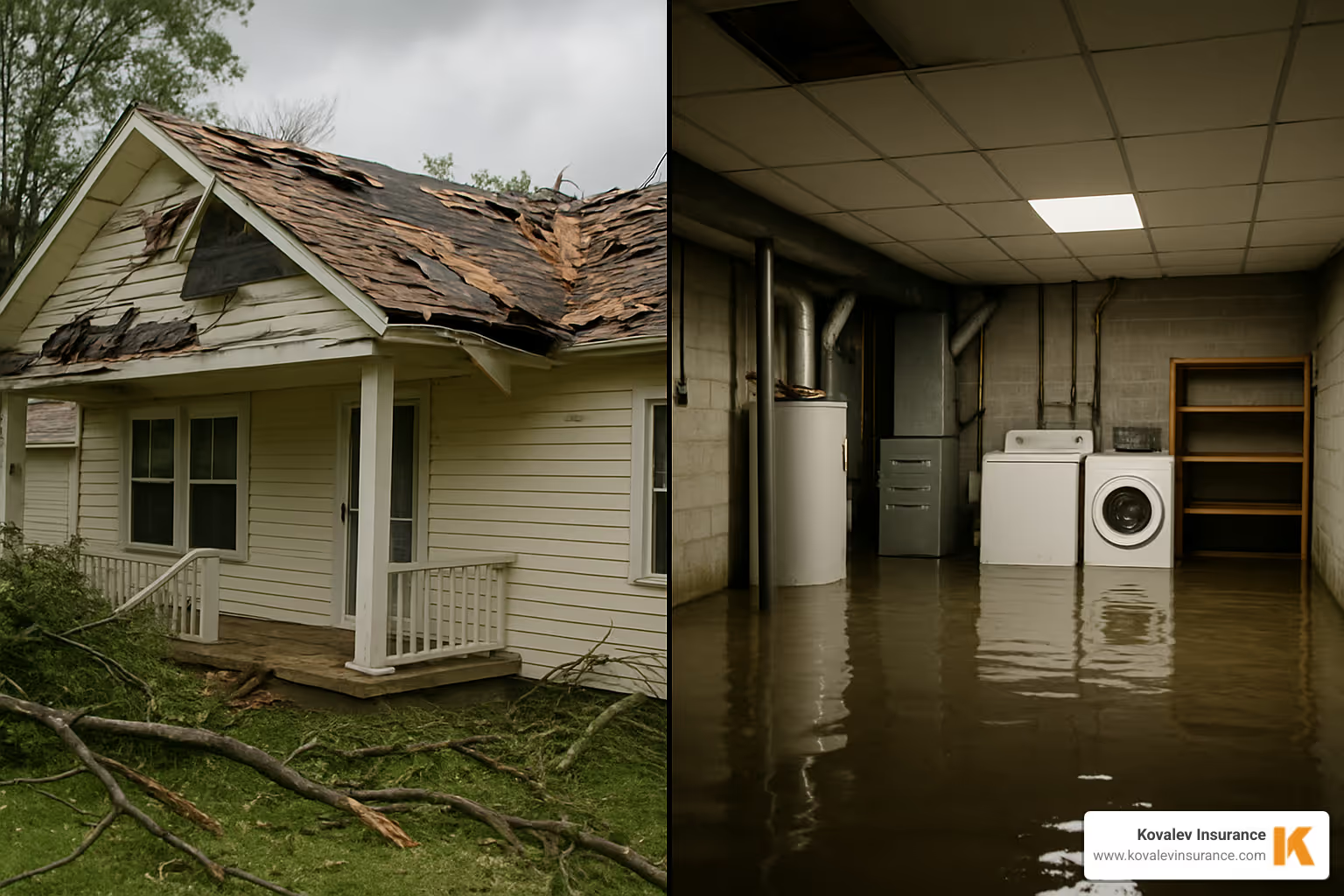Blog Content
22
Sep
2025

A homeowners insurance policy is the simplest way to protect your biggest asset from Massachusetts’ unpredictable weather and everyday mishaps. From fierce nor’easters and coastal hurricanes to heavy snowfalls that can cause ice dams and roof collapse, the Bay State presents unique risks. Mortgage lenders demand proof of insurance because the policy protects their financial stake in your property. But even if you own your home outright, one fire or severe storm could erase years of hard-earned savings in an instant.
Core protections:
Popular policy forms: HO-3 (standard), HO-5 (comprehensive), and HO-2 (budget-friendly named perils). The national average premium is about $1,989, but Massachusetts costs swing higher or lower depending on whether you live in Newton, Brookline, or closer to the coast.

Quick glossary:

Flip to the declarations page of any homeowners insurance policy and you will see Coverages A–F. Those letters are your layered shield; the dollar amounts beside them are the most an insurer will pay.
For details beyond this quick overview, see What Does MA Home Insurance Cover.
Coverage A pays to rebuild your house and anything attached. Make sure the limit reflects local construction costs—replacing a colonial in Needham might run well over market value.
Coverage B automatically gives 10-15 % of Coverage A for detached items like garages or sheds. Increase it if your outbuildings are worth more. More tips: Dwelling Construction.
Typical limit: 50-80 % of Coverage A. Always opt for Replacement Cost coverage over Actual Cash Value (ACV). For example, if a fire destroys your five-year-old sofa (ACV might be $200), Replacement Cost gives you enough to buy a new, comparable sofa (perhaps $1,500). The difference is significant. Photograph belongings, create a home inventory, and store receipts online. High-value jewelry, art, or collectibles have special sub-limits and should be "scheduled" separately for their full value. More at How Replacement Cost Estimated.
If a nor’easter makes your Brookline home unlivable, ALE pays the extra cost of hotels, meals, and short-term rentals—usually 20-25 % of Coverage A and limited to 12–24 months.
Coverage E protects your assets if someone sues you for injuries or property damage. Start at $300,000; consider $500,000 or an umbrella for better peace of mind.
Coverage F (medical payments) covers minor injuries to guests, often $1,000–$5,000, and can avoid lawsuits. Umbrella details: Personal Umbrella Insurance Massachusetts.

Think of policy forms as rungs on a ladder—the higher you climb, the broader the protection.
"Open perils" covers everything except listed exclusions; "named perils" covers only hazards listed. That difference matters when a Nor’easter brings surprise damage.
HO-3 insures the structure against almost anything sudden and accidental, yet keeps costs manageable by limiting belongings to named perils. Average U.S. cost: about $1,989; Greater Boston can be higher.
Choose HO-5 if you own a luxury property in Wellesley or keep pricey gear at home. Both structure and contents enjoy open-peril coverage and higher sub-limits. Expect roughly 10-15 % higher premiums—often a bargain for the added peace of mind. More info: What Is HO5 Insurance Mass.

A policy’s fine print decides whether you write a small check (deductible) or a huge one (full repair). Massachusetts weather makes knowing the difference critical.
Fire, lightning, windstorm, hail, theft, vandalism, falling objects, weight of ice/snow, frozen or burst pipes, and accidental water discharge. More examples at Are Ice Dams Covered Home Insurance.
Flood, earthquake, wear and tear, pest damage, neglect, and power failures off-site. Flooding surprises many inland homeowners—surface water from overflowing rivers or heavy rain seeping into a Natick basement is still a flood to insurers and is not covered by a standard policy.
To understand your specific risk, you can check your property on the FEMA Flood Map Service Center. If you're in or near a flood zone, you must consider a separate flood policy: Personal Flood Insurance Massachusetts.
Add-ons let you customize your shield:
Details: What Is Ordinance Law Coverage and What Equipment Breakdown Coverage.
Premiums vary, but knowing what drives them lets you control the numbers. For Massachusetts averages see Average Home Insurance Massachusetts.
Learn more: Understand Home Insurance Costs Mass.
Choose an amount you can comfortably pay out-of-pocket tomorrow. Most homeowners pick a flat deductible of $1,000; increasing it to $2,500 can shave 10-15 % off your annual premium. However, coastal properties often carry a separate, mandatory percentage-based wind or hurricane deductible. This is calculated as a percentage (e.g., 1%, 2%, or 5%) of your dwelling coverage (Coverage A). For a home insured for $800,000, a 2% hurricane deductible means you'd pay the first $16,000 of damages from a named storm. Know your specific deductible before the next storm hits.
Yes. Upgrades raise replacement cost. Call your agent before or right after work so your new kitchen or finished basement is fully insured.
Once a year or after major life events (marriage, new baby, big purchases, renovations). Construction costs and property values in Greater Boston change quickly, so annual check-ups keep coverage and discounts current.
Your house is more than an address—it is where your story unfolds. Protect it with coverage that matches the risks of Newton’s tree-lined streets, Wellesley’s high property values, or Natick’s sudden spring floods.
Kovalev Insurance compares multiple top-rated carriers, explains options in plain English, and tailors protection to your budget and lifestyle. When nor’easters hit or accidents happen, you’ll be glad you chose a policy that truly fits.
Ready to feel confident about your coverage? Get a quote for the best homeowners insurance in Massachusetts today.
X